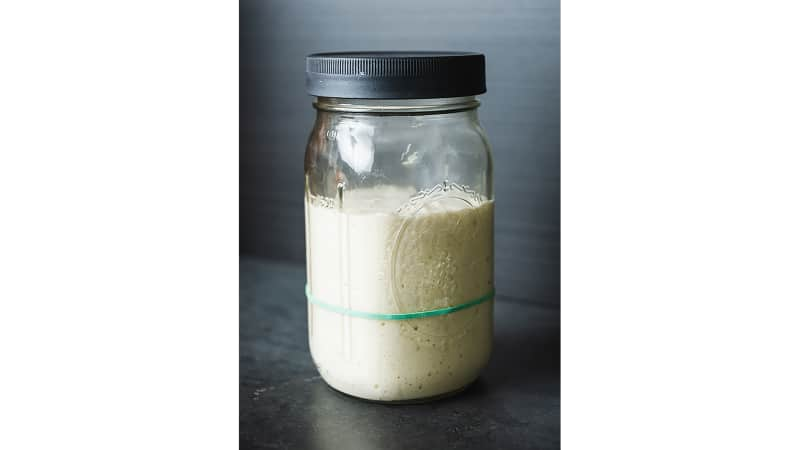Maybe you made a sourdough starter from scratch (hopefully using our Sourdough Starter Master Plan), or maybe you were gifted one from a friend. Either way, you’ll want to know the easiest and best way to maintain it, and I’ve got you covered.
Care and Maintenance of a (Mature) Sourdough Starter
Published May 28, 2020.

How to Determine if Your Starter is "Mature"
If your starter is indeed mature, it should meet the following criteria:
1. It should be happy being fed with nothing more than high-protein white all-purpose flour (such as King Arthur) or any bread flour.
2. It should double to triple in volume in less than 12 hours time (a really healthy one like mine in the photo above might triple in as few as 5 hours, especially when ambient temps are above 75 degrees F).
3. It should pass the “float” test, meaning a blob of refreshed and fully-proofed starter will float on a container of water for at least 10 seconds.
If you can answer yes to all of these questions, you are now free to store your starter in the fridge between uses, following the process below. (If not, please don’t jump the gun and start cold-storing your culture before it is fully mature. If you do, it probably won't bake well, and it won't ever get to that point if kept in cold storage. Feed it at room temperature until you are getting reliable results with it; it's a hassle, but worth it compared to the frustration you'll experience working with a sluggish starter. That said, if you need a break from the once- or twice-daily feedings, you can always put it in the fridge for a few days just to give yourself a vacation.)
Sourdough Starter Cold Storage Method
If your starter passed the maturation test, here's how to store it between uses.
1. Refresh your starter using a 2:2:1 ratio, meaning 2 parts water, 2 parts flour, and 1 part starter. (Note: this is a reduced starter amount compared to what I recommend for creating one from scratch; once a starter is mature it will do better with less starter in the mix). Feel free to scale up at this point, as long as you keep the ratio constant. I typically refresh mine using 75 grams starter, 150 grams water, and 150 grams flour; this gives me plenty for baking with over the course of a week, plus extra for use as discard. (Save any leftover starter from this feeding in the fridge as a backup culture.)
2. Place the mixture in a jar, seal it well but loosely, and let it sit at room temperature until it has about doubled in volume, which should take from 3 to 6 hours. Use a rubber band around the container to mark its starting volume.
3. Once the mixture has doubled, transfer the jar to the fridge. (But: Be sure your levain has increased in volume to at least double before you put it into the fridge. The idea here is to catch it at about the halfway point of its growth cycle and then slow it way down in the fridge, which will let it remain viable for a long time. Do it too early or too late and it won't have enough stored up activity to bounce back quickly once it warms.)
4. Cold-stored starter will keep for up to two weeks without much loss in vigor, though it is best used or re-refreshed within 7 days. And it will remain alive for at least a month—probably longer—but will likely need several room temperature feedings to return to full strength if you stash it away super long.
5. From here on in, refresh it as often as needed, repeating steps 1 through 3.
If you're interested in learning more about sourdough, check out these resources and recipes:
